The rutabaga is an interesting and often misunderstood food. It’s a natural cross between cabbage and turnip, cultivated in Europe since the 17th century. The role of this vegetable in 20th century history is sometimes clouded by issues of terminology. English-speaking history buffs may be familiar with the “Turnip Winter” of 1916-17, a time of great hunger and hardship for the German civilian population. And people may also have read that the first Halloween jack-o’-lanterns were turnips, carved to resemble faces, in parts of Ireland and Scotland. But I think many would be surprised to learn that the first jack-o’-lanterns were probably rutabagas rather than turnips, and that the crop that sustained the Germans during that terrible “turnip” winter was also the rutabaga.
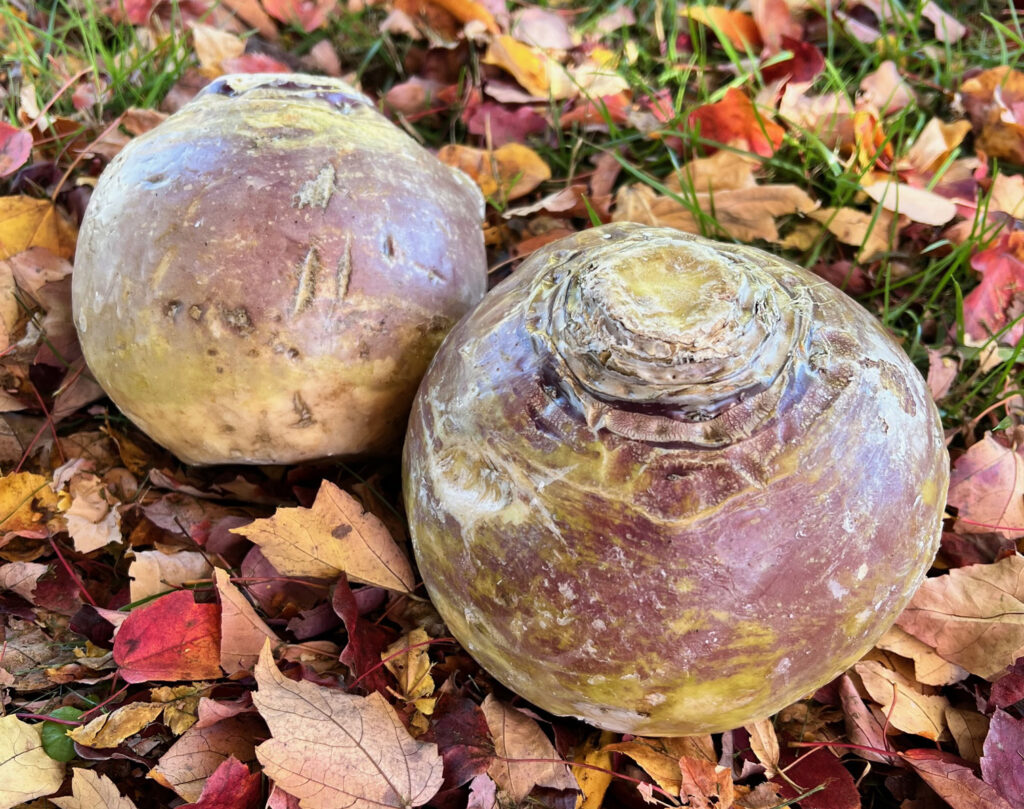
Part of this confusion comes from the fact that rutabagas have different names in different parts of the English-speaking world. In many Commonwealth countries they are called swedes or turnips, but in Scotland they are called neeps. Rutabaga is said to be the most common term in the USA, though my family in Massachusetts always called them turnips, and the name yellow turnip is also used. My local supermarkets call them rutabagas or wax turnips. Even when they are labeled as rutabagas, the cash register rings them up as “Rutabaga (Turnip).”
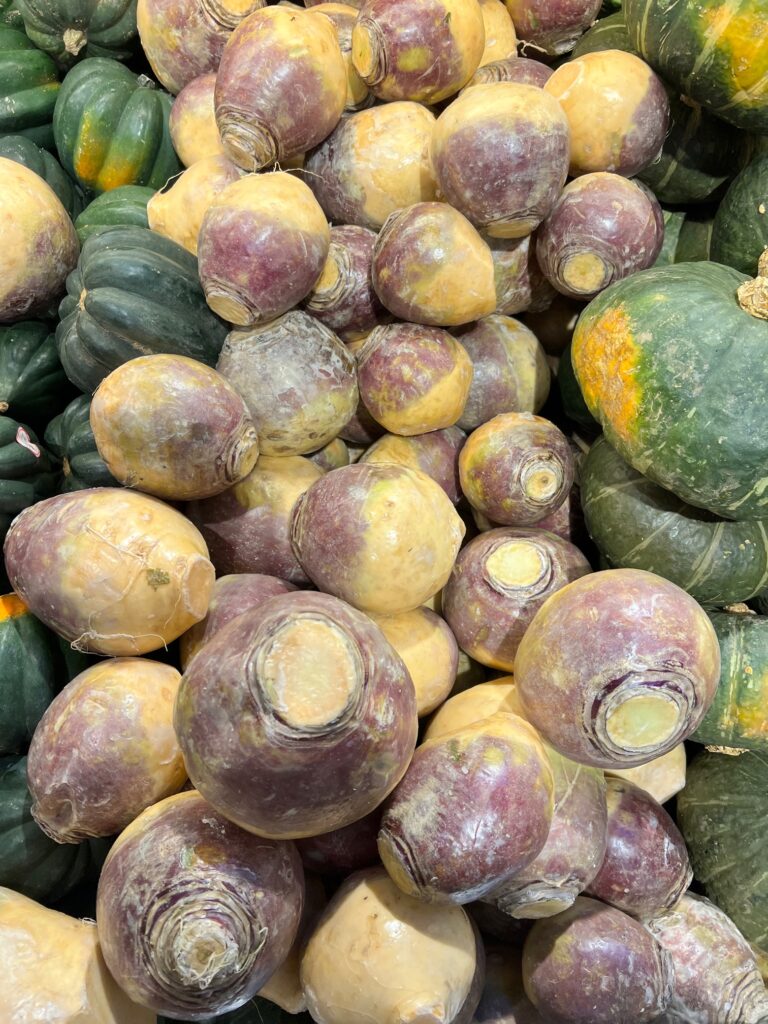
It also does not help that there are many regional German names for this vegetable. Steckrüben is the most common term for these, but they are also called Kohlrüben except in Austria where this word may be used for kohlrabi. Rutabagas can also be called by other names including Runkerüben and Wruken.
The rutabaga is an extremely versatile crop. It can be used for animal fodder or for human consumption. It can spend all winter in the ground, and can be harvested at any time from fall through the spring. In cold storage, rutabagas remain fresh for months. The greens of the plant are also edible, and can be eaten raw or cooked.
It was not only during WWI that this crop was relied on in a time of hunger. In the food shortages at the end of WWII, and later, many Germans turned to the rutabaga for nourishment; they were strategically planted during the war to feed people in difficult times. The rutabaga has been indelibly linked to famine and conflict in the twentieth century. And that is really a shame. Rutabagas are delicious, with a robust savory flavor that is balanced by a delicate sweetness. They are also very nutritious, high in antioxidants and vitamins.
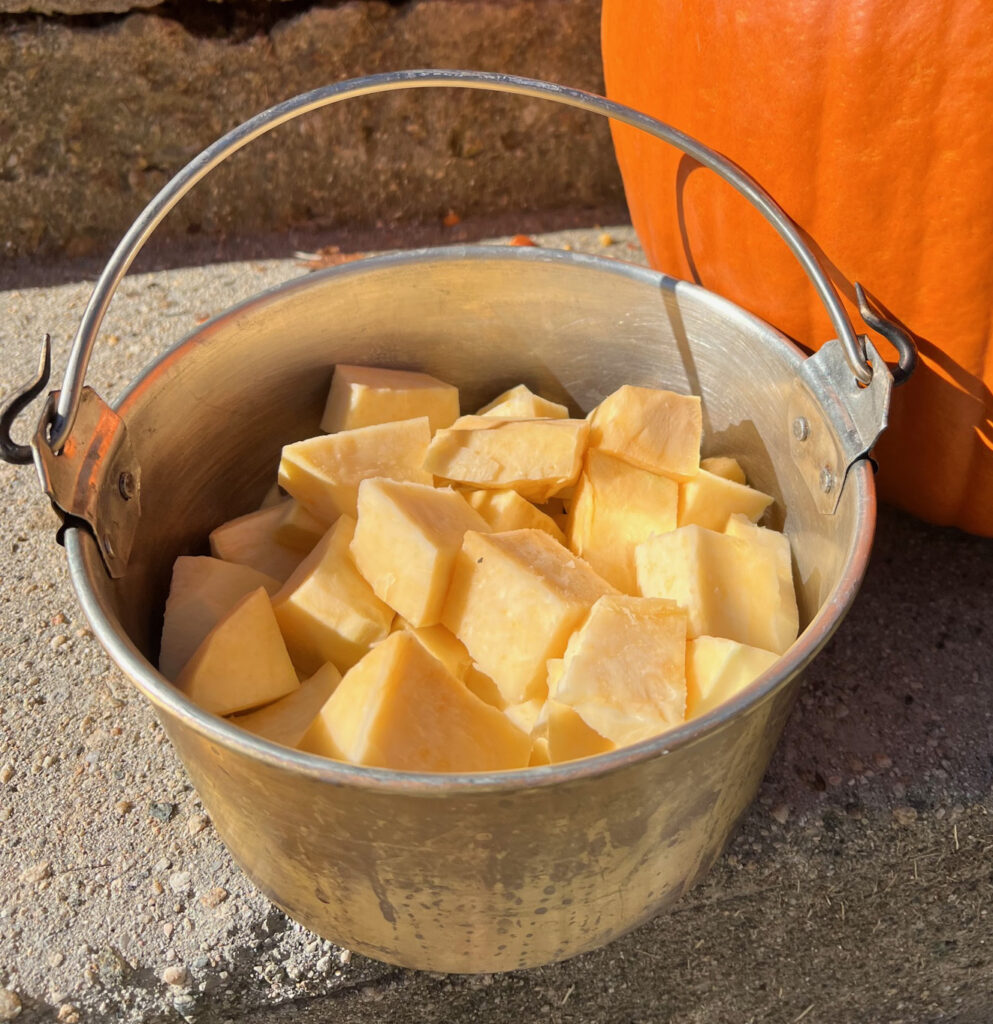
Let’s look at some wartime German recipes for rutabaga. In early October, 1941, the 281. Sicherungs-Division distributed a list of tested and approved recipes for preparing vegetables that were widely available in their area of operations (the northern sector of the Eastern Front). The recipes were for corn, pumpkins, and rutabaga. These recipes were intended to be used by the units and kitchens of the Division. Here are the rutabaga recipes.
Rutabaga as a vegetable dish
The rutabagas are to be peeled, washed, chopped and boiled in salt water, then mixed with a roux, and seasoned with pepper. This is sufficient as a vegetable side dish for all meat dishes.
Rutabaga as a stew
The rutabagas are to be peeled, briefly washed, chopped, and boiled in broth or water with beef or pork. This is to be thickened with a roux, or by stirring in flour, or, alternatively, with potatoes. At the end, season them with salt or pepper.
Salted rutabaga
This recipe, which is completely new and largely unknown to the troops, is intended for the troops particularly in the winter months, during which most cases of vitamin deficiency arise. The units can prepare from this large supplies for the winter time. For mobile and fighting troops, this may not always be possible due to time constraints and transportation difficulties. As a result, this preparation style should predominantly be considered during rest periods. The rutabagas are to be peeled and washed, and using a vegetable slicer, finely shredded, and then salted in casks, just as cabbage is salted to make sauerkraut. After 6-8 weeks the distribution and use of this vegetable can begin.
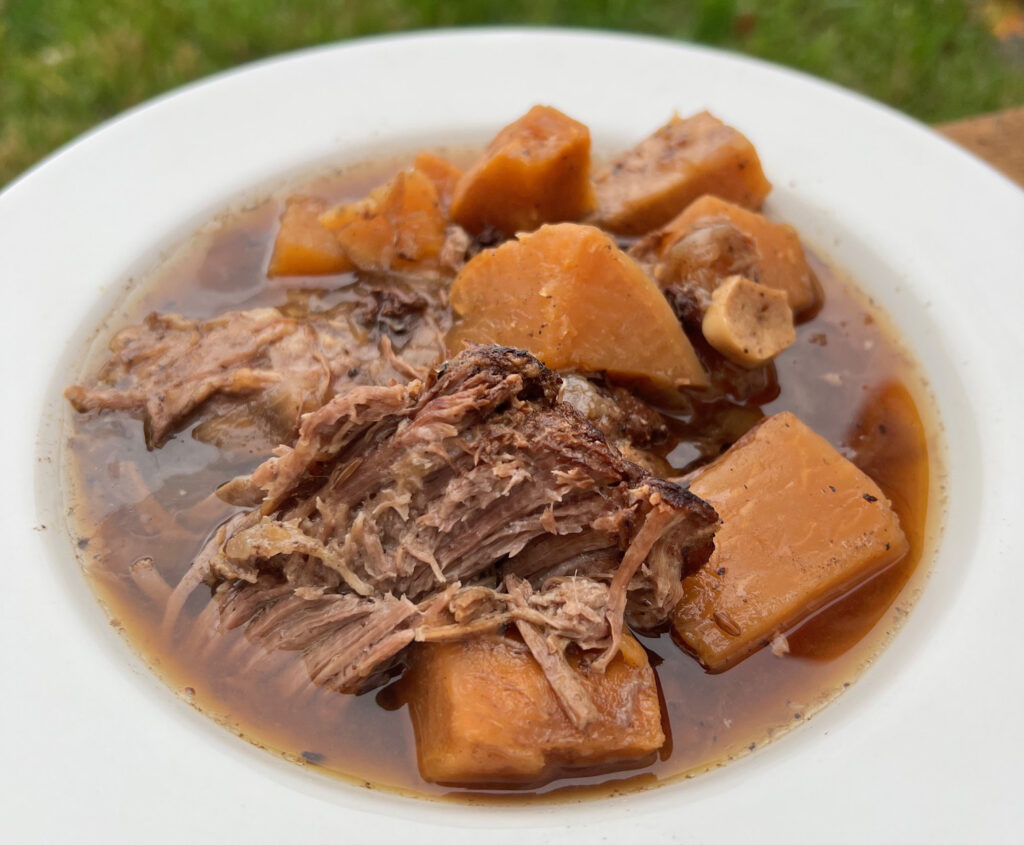
“Die Feldküchengerichte” (The Field Kitchen Recipes) was a book of field kitchen style recipes that were adapted from the 1941 German Army cookbook for use on the home front. This book contains suggestions as well as recipes for cooking rutabagas. Rutabagas are said to be particularly well suited for use in stews, and also as a vegetable dish on their own. Boiled or steamed, they can be used in salads. Caraway seeds are good with rutabaga, and should be added at the start of the cook time. Basil, too, can be used, though this should be added to the dish when it is almost ready. It is noted that rutabaga can be included in a diet to reach requirements for Vitamin C intake.
A basic vegetable stew recipe from the book is as follows: Place fresh, pickled, or smoked meat in boiling water. To this, add 600 grams of fresh vegetables or 30 grams dried vegetables, and 750 grams of fresh potatoes or 75 grams of dried potatoes, and cook until done. Season this with salt, onions cooked together with the stew, and fresh herbs, chopped, and added to the finished dish. Two variations of this basic recipe are given that use rutabaga. To make rutabaga and potato stew, use 800 grams of rutabaga and 500 grams of potatoes, and cook this together with marjoram. To make a stew with rutabaga, noodles and pickles, use 600 grams of rutabaga and 75 grams of noodles. Cook and rinse the noodles, then add them to the rutabagas, and mix chopped pickles in at the end.
The “Tornisterlexikon für Frontsoldaten” says that turnips and rutabagas can simply be peeled, chopped, and boiled in water with a little salt for about 2 hours, until soft, and that this recipe is good with fatty meat.
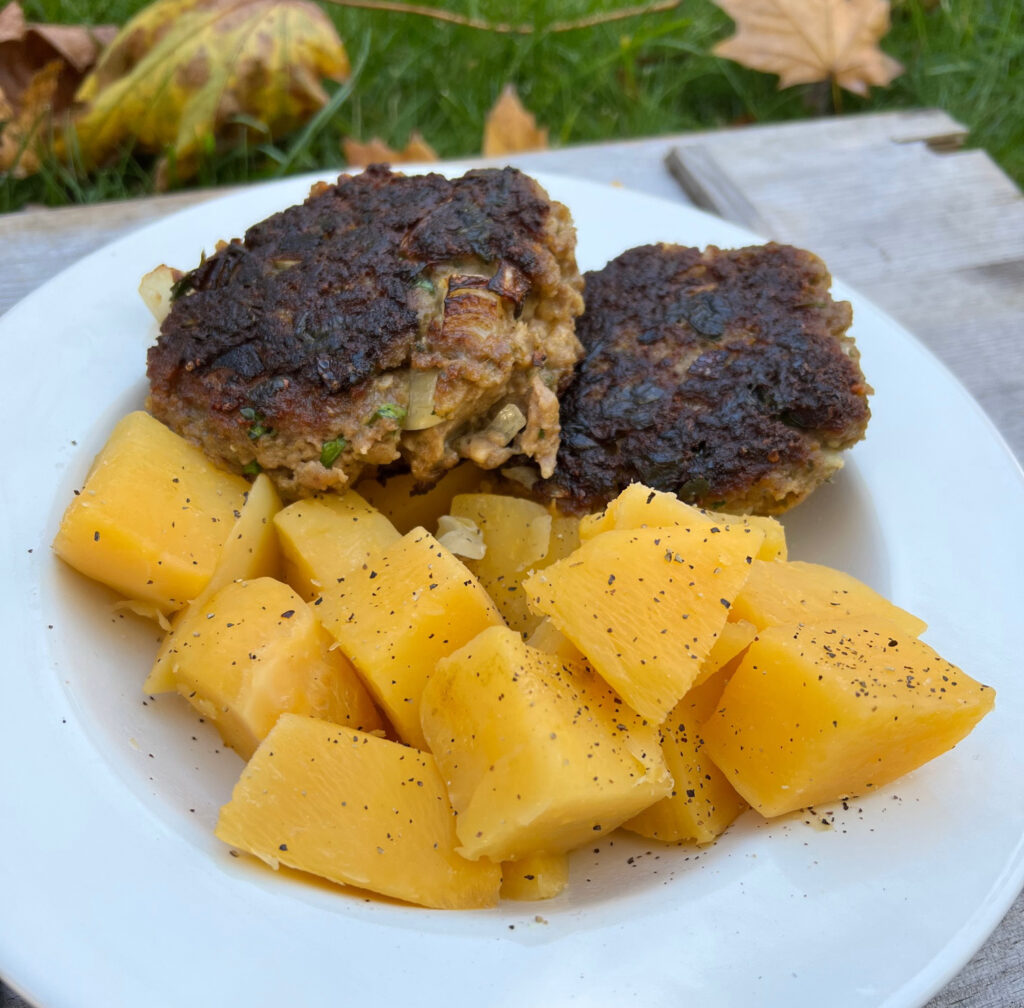
It’s my experience that the delicious and nutritious rutabaga is extremely well-suited to simple, hearty meals of the type often prepared for soldiers in WWII. It can be used together with, or in place of, other root vegetables, in virtually any dish. Generally, the rutabagas available at American supermarkets are coated with a food-safe wax that keeps them from drying out. They will last a very long time in the fridge and they are easy to transport and store in field settings as well. I regard rutabaga as a severely underrated food.